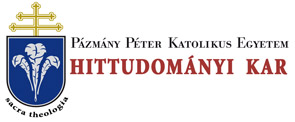Folia Theologica et Canonica 4. 26/18 (2015)
IUS CANONICUM - Szabolcs Anzelm Szuromi, O.Praem., The systematic development of the Liturgy of Hours during the first centuries - based on the Jewish and Christian tradition
THE SYSTEMATIC DEVELOPMENT OF THE LITURGY OF HOURS... 157 Policarp Radó (t 1974).19 These precise research prepared a new scientific interest concerning the “nucleus” of the Divine Office, which inspired many new works, e.g„ the indispensable projects and new results of Roger E. Reynolds (f2014)20. Based on their work it is clear that even in the first four centuries the Divine Office was not reserved only for successors of apostles, presbyters and deacons, but for the entire assembly of faithful. It seems, that at the beginning this “nucleus” form of Divine Office — which unambiguously followed the concept of the community prayers of the Temple of Jerusalem - was not prayed at every day. We have also many data about the private daily - family, small communities at home - prayers of that epoch. Among them we must indicate firstly the so called “matutina” which contained the praying of Psalms and was combined with another prayer, namely the “laudes”.21 It can be read in detail at St. Athanasius (f373)22 23, in his work, entitled De virginitate.13 Tertullianus (fafter 220) expressively speaks in his work De ieiunio24 25 about the three daily prayers: tenia, sexta, nona.13 Liturgical historians reckon among the origin of the Divine Office the “lucemarium” which developed from the celebration of the true light: Jesus Christ. In this last liturgical act we could see already- besides the praying of Psalms - some readings from the Sacred Texts, moreover the “Gloria”. As a general opinion, we shall refer one stronger movement which made fruitful influence on the development of the Divine Office to be daily and more frequented. This is the monasticism which from its beginning- including the time of Pachomios (f346)26 - payed particular attention to the prayerful consecration of the day and this practice enriched the day to day form of the developing Divine Office with many supplements.27 19 Radó, P., Enchiridion liturgiáim, I. Romae-Friburgi Brisg.-Barcinone 1961. 20 Reynolds, R. E., The Tsidorian' Epistula ad leudefredum: an Early Medieval Epitome of the Clerical Duties, in Reynolds, R. E. (ed.), Clerical Orders in the Early Middle Ages (Variorum Collected Series CS670), Aldershot 1999. III/252—330. 21 Radó, P., Enchiridion liturgicum, I. 413. 22 Vanyó, E., Az ókeresztény egyház és irodalma (Ókeresztény írók I), Budapest 1988. 565-579. 23 Patrologiae cursus completus. Series Graeca, ed. Migne, I-P., I-CCLXI, Lutetiae Parisiorum 1857-1866 (Hereafter: PG) XXVIII. 276. 24 Corpus scriptorum ecclesiasticorum latinorum, 20. Vindobonae 1890. 25 Radó, P., Enchiridion liturgicum, I. 413-414. 26 de Vogüe, A., Saint Pachâme et son oeuvre d’après plusieurs études récentes, in Revue d’histoire ecclésiastique 69 (1974) 425-453. Rousseau, Ph. Pachomius: the Making of a Community in Fourth-Century Egypt, Berkeley CA. 1985. 27 Oury, G-M., Office Divin -1. En Occident, 691-692. Taft, R., The Liturgy of the Hours in East and West, 62-1'S.
